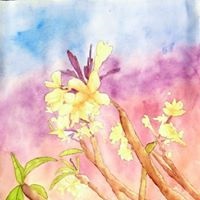The Lily of the valley flower is also known by which other common name?
Lily of the valley is a highly poisonous woodland flowering plant with sweetly scented, pendent, bell-shaped white flowers borne in sprays in spring. It is native throughout the cool temperate Northern Hemisphere in Asia and Europe. All parts of the plant are highly poisonous, including the red berries which may be attractive to children.
If ingested, even in small amounts, the plant can cause abdominal pain, vomiting, reduced heart rate, blurred visions, drowsiness, and skin rashes. Roughly 38 different cardiac glycosides have been found in the plant. These are compounds that increase the output force of the heart and increase its rate of contractions.
Lily of the valley is also known by a number of other names including May bells, Our Lady’s tears, and Mary’s tears. In pre-modern England, the plant was known as glovewort used as a salve for sore hands.
Lily of the valley is the national flower of Yugoslavia and it also became the national flower of Finland in 1967.
In the Christian tradition, two of the flower’s alternative names- Our Lady’s tears and Mary’s tears- derive from Christian legends that the flower sprang from the weeping of the Virgin Mary during the crucifixion of Jesus. Other etiology have to coming into being from Eve’s tears after she was driven with Adam from the Garden of Eden.
It is also a symbol of humility in religious painting considered the sign of Christ’s second coming.
More Info:
en.m.wikipedia.org










